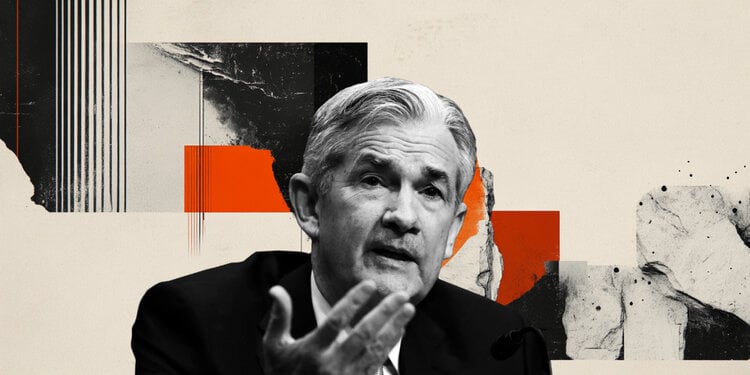Products You May Like
Jerome Powell, Chairman of the United States (US) Federal Reserve (Fed), repeated that they do not need to be in a hurry to adjust the monetary policy in his prepared remarks for delivery on the first day of his testimony on the semi-annual Monetary Policy Report before the Senate Banking Committee.
Powell testimony key takeaways
“Policy is well-positioned to deal with risks, uncertainties.”
“We can maintain policy restraint for longer if economy remains strong and inflation does not move toward 2%.”
“We can ease policy if labor market unexpectedly weakens or inflation falls more quickly than expected.”
“The US is economy strong overall; inflation is closer to 2% goal but still somewhat elevated.”
“Fed’s framework review will not include a focus on inflation target, which will remain 2%.”
“Fed will wrap up framework review by late summer.”
This section below was published as a preview of Federal Reserve Chairman Jerome Powell’s testimony at 10:00 GMT.
- Jerome Powell’s testimony in the US Congress will be a top-tier market-moving event this week.
- New clues on the Federal Reserve interest rate path are awaited.
- US Dollar, stock markets and other asset classes could see big swings with the Fed Chair’s words.
Jerome Powell, Chairman of the United States (US) Federal Reserve (Fed), will deliver the Semi-Annual Monetary Policy Report and testify before the Senate Banking Committee on Tuesday. The hearing, entitled “The Semi-Annual Monetary Policy Report to the Congress,” will start at 15:00 GMT and it will have the full attention of all financial market players.
Jerome Powell is expected to address the main takeaways of the Fed’s Semi-Annual Federal Reserve Monetary Policy Report, published last Friday. In that report, the Fed noted that financial conditions continue to appear “somewhat restrictive” and reiterated that policymakers will weigh data when deciding on future policy moves.
In a long Q&A session, US representatives are expected to ask Powell about the interest rate path, inflation developments, and the economic outlook. They are also very likely to inquire about how US President Donald Trump’s policies could influence prices, growth prospects and the monetary policy moving forward.
The CME Group FedWatch Tool shows that markets price in a less-than-10% probability that the Fed will lower the policy rate by 25 basis points (bps) in March after the latest employment report reaffirmed tight conditions in the labor market.
In January, Nonfarm Payrolls (NFP) rose 143,000. Although this reading came in below the market expectation of 170,000, the US Bureau of Labor Statistics (BLS) announced upward revisions to previous NFP prints. “The change in total Nonfarm Payroll employment for November was revised up by 49,000, from +212,000 to +261,000, and the change for December was revised up by 51,000, from +256,000 to +307,000. With these revisions, employment in November and December combined is 100,000 higher than previously reported,” the BLS noted in its press release.
The market positioning suggests that the US Dollar (USD) has little room left on the upside even if Powell confirms that they will hold the policy unchanged in March. On the other hand, the USD could come under selling pressure in case Powell adopts an optimistic tone about the inflation outlook and leaves the door open for a rate reduction at the next policy meeting.
Tariffs FAQs
Tariffs are customs duties levied on certain merchandise imports or a category of products. Tariffs are designed to help local producers and manufacturers be more competitive in the market by providing a price advantage over similar goods that can be imported. Tariffs are widely used as tools of protectionism, along with trade barriers and import quotas.
Although tariffs and taxes both generate government revenue to fund public goods and services, they have several distinctions. Tariffs are prepaid at the port of entry, while taxes are paid at the time of purchase. Taxes are imposed on individual taxpayers and businesses, while tariffs are paid by importers.
There are two schools of thought among economists regarding the usage of tariffs. While some argue that tariffs are necessary to protect domestic industries and address trade imbalances, others see them as a harmful tool that could potentially drive prices higher over the long term and lead to a damaging trade war by encouraging tit-for-tat tariffs.
During the run-up to the presidential election in November 2024, Donald Trump made it clear that he intends to use tariffs to support the US economy and American producers. In 2024, Mexico, China and Canada accounted for 42% of total US imports. In this period, Mexico stood out as the top exporter with $466.6 billion, according to the US Census Bureau. Hence, Trump wants to focus on these three nations when imposing tariffs. He also plans to use the revenue generated through tariffs to lower personal income taxes.
About Jerome Powell (via Federalreserve.gov)
“Jerome H. Powell first took office as Chair of the Board of Governors of the Federal Reserve System on February 5, 2018, for a four-year term. He was reappointed to the office and sworn in for a second four-year term on May 23, 2022. Mr. Powell also serves as Chairman of the Federal Open Market Committee, the System’s principal monetary policymaking body. Mr. Powell has served as a member of the Board of Governors since taking office on May 25, 2012, to fill an unexpired term. He was reappointed to the Board and sworn in on June 16, 2014, for a term ending January 31, 2028.”
